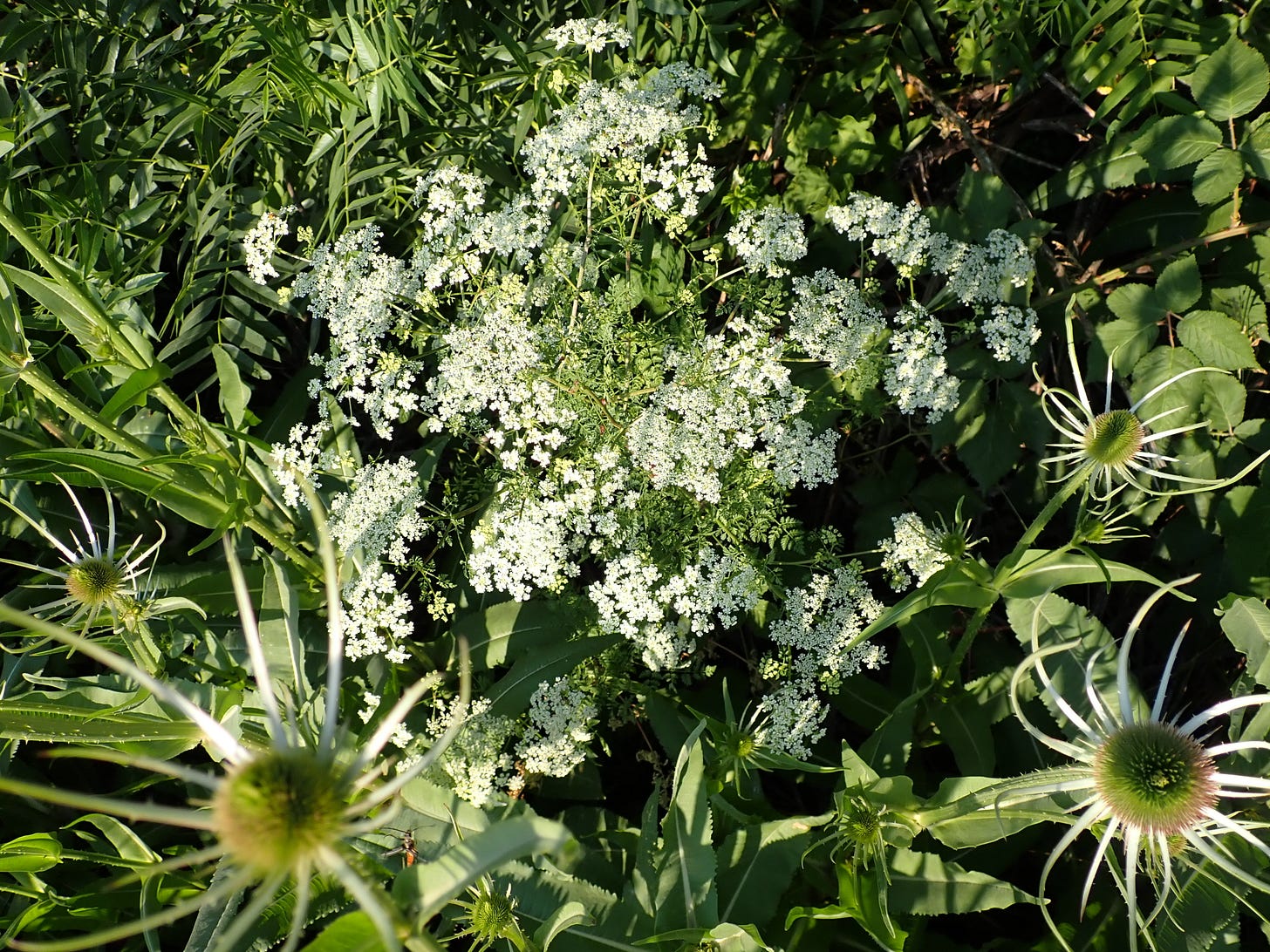Invasion biology has a data problem
The pool is too shallow for the broad generalizations that are made
Here’s another draft chapter from the book I am co-authoring with Nikki Hill, tentatively entitled “Don’t Blame the Messenger: A critique of the ‘invasive plant’ narrative.” Paying subscribers will recieve a copy of the whole book when we finish a full draft.
By “‘invasive plant’ narrative” we are referring to the cultural story being told about “invasive plants,” what they are, what they do, what must be done about them, etc. This narrative bears little relation to the science of invasion biology except in some terminology. Whereas the narrative is a simple black and white morality tale about villans and victims, the field of science is characterized by debate and contention, with very little consensus on anything. The field has also become increasingly aware of its own shortcomings, and this chapter delves into one aspect: data bias, aka knowledge base bias. It’s not the sexiest topic maybe, but it’s significant.
“Garbage in, garbage out” is a well-known maxim from the world of computer science, referring to how poor input will produce poor output. It’s analogous to the concept of “data bias” in the field of statistics, something that statisticians are trained to watch for and guard against. Simply defined, data bias is when inaccurate data or information collected about a population results in misrepresentations of that population.
As it turns out, invasion biology has a data bias problem. Arguably, according to researchers in the field, the pool is simply too shallow for the broad generalizations that are made.
Not until 2015 was there a centralized list of “alien” plants found worldwide. This electronic depository, the Global Naturalized Alien Flora (GloNAF) databasei, contains entries on around 14,000 species and subspecies of plants, which is about 4% of the planet’s vascular plants. The founders of GloNAF were concerned that “knowledge of the global spread and distribution of naturalized species is still very limited”ii because the current data was “jaggy and incomplete.”iii
Though GloNAF has proven useful in attempting to assess various hypotheses in invasion biology, it is inevitably a hodge-podge to some degree because, as we discussed in an earlier chapter, labels like “native,” “alien,” “invasive,” etc., lack standardized definitions and differ regionally, as do notions of “impact.”
In terms of quantifiable evidence of impact, surprisingly few of the ~14,000 species have received thorough appraisals. In “Bias and error in understanding plant invasion impacts,” Hulme et al. report:
Robust quantitative assessments of ecological impacts have been undertaken for fewer than 200 alien plants, highlighting a considerable knowledge deficit. Are these studies representative of alien plant impacts as a whole? It does not appear so, given that only nine species account for one-third of all quantitative assessments of ecological impacts.iv
(One of those nine species is Purple Loosestrife, the subject of a chapter in this book.)
We were surprised learn that the pool of data is this shallow and we expect that many readers will be too. The same authors also point out that several “high-profile” plants are not among those 200 species, including Miconia (Miconia calvescens) and (the undeservedly notoriousv) Kudzu (Pueraria montana). Others have been the subject of only one study, like Strawberry Guava (Psidium cattleianum) and Brazilian Pepper (Schinus terebinthefolius). The authors warn that “results from single studies at single locations or years might not be widely generalizable.” A similar survey of Brazilian research papers found a “lack of focus” on impact, which the authors cautioned “limit current understanding of the topic.”vi
Geographical bias
Maps produced from the GloNAF data illustrating the concentration of “alien species” around the worldvii show the highest concentrations on the east and west coasts of the US and Canada, and in the UK, southeastern Australia, New Zealand, and Japan. Is this actually where the highest concentrations are, or are these just the regions that have received the most study because they are in countries with the highest concern about “invasives”?
The majority of invasion biology research does indeed take place in North America, Europe and Australia, with far less in Asia (excepting Japan) and vanishingly little in Africa. In Africa, two thirds of the research is from just one nation, South Africa.viii
Keep reading with a 7-day free trial
Subscribe to Speaking for the Trees, No Matter Where They're From to keep reading this post and get 7 days of free access to the full post archives.





